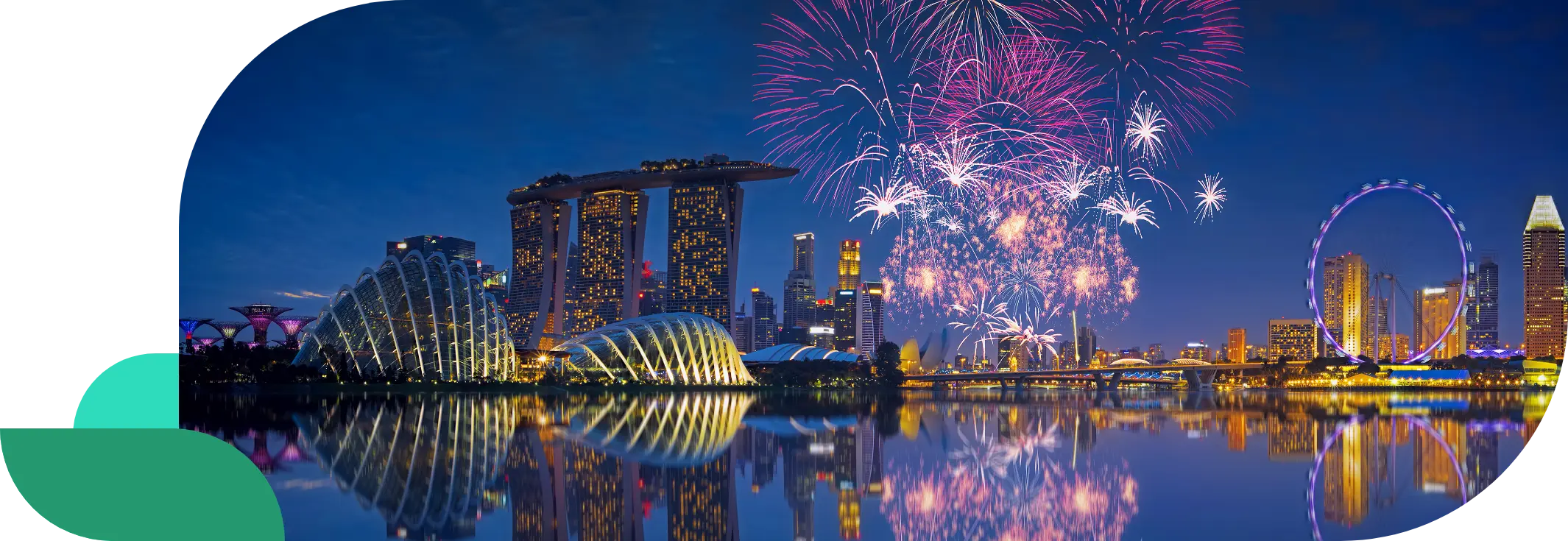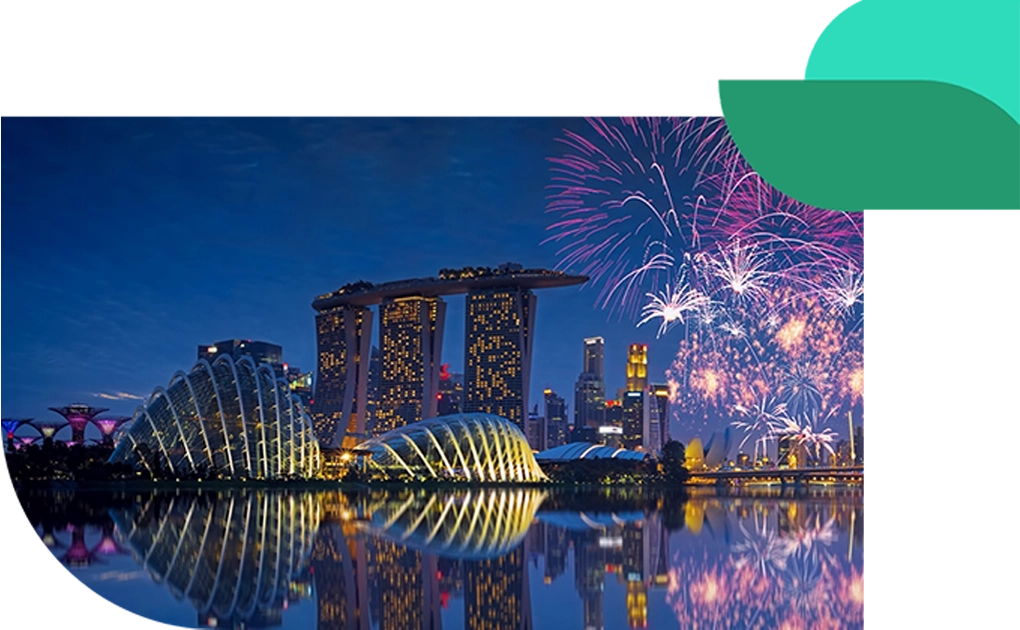SG60: a milestone in nation building, a checkpoint on the sustainability journey
Singapore celebrates 60 years of independence in 2025. While it has achieved much in terms of growth and development, the nation is ever mindful of its need to have resilience in essentials such as water, food and energy. Achieving economic success has to be in tandem with advancing sustainability.
Singapore has several major infrastructure projects in the pipeline, such as transportation, healthcare, waste management and water treatment facilities. Singapore carbon emissions are projected to rise, peaking in 2028, before it trends downward1.
Mega projects include the 1,080 hectare Changi East development designed to strengthen Changi as an aviation hub, featuring Changi Airport Terminal 5 with a three‑runway system2; and the continuing expansion of Tuas Port to handle even more of the world’s largest container vessels, shipping alliances, and shipping lines, but also to set new standards, such as in sustainability3. In addition to enhancements in the aviation and maritime sectors is the expansion of the land crossing at Woodlands Checkpoint. Developed in phases over the next 10 to 15 years, it will be about five times its current size, increasing cargo clearance capacity by 30% and arrival car clearance capacity by 95%4.
Against this backdrop of activity, Singapore aims to achieve net‑zero emissions by or around 2050.
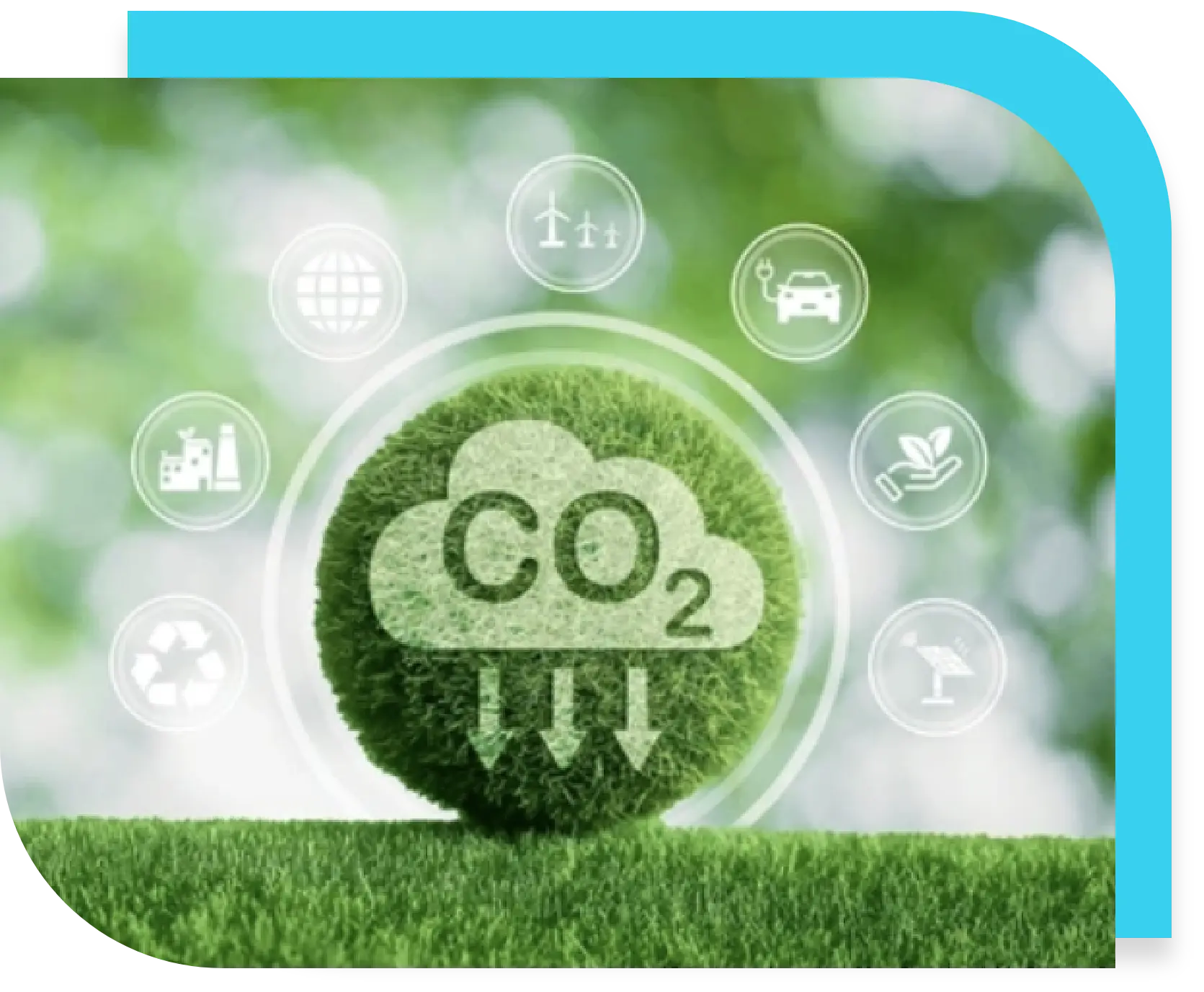
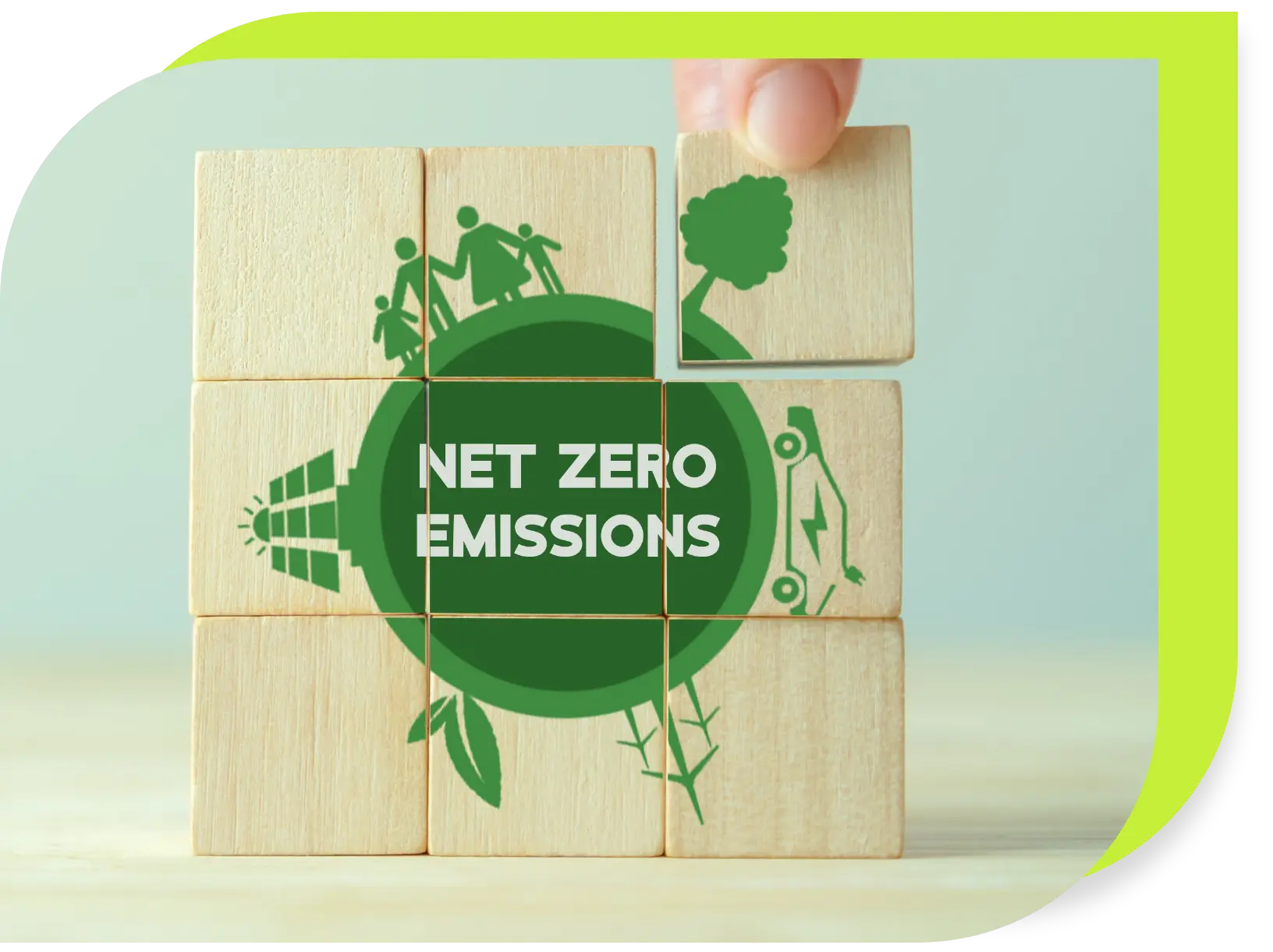
The SG Green Plan sets out the roadmap to achieve net-zero emissions by 2050.
Among the actions is getting cleaner energy sources across all sectors:

Renewable energy

Green Transport

Green Buildings

Energy Market Authority, Singapore Energy Statistics, Chapter 6: Solar5
With plentiful sunshine year‑round, solar energy remains a key source of renewable energy for Singapore.
Solar panel deployment has grown rapidly over the past few years, and appears to be on track for achieving 2 giga-watt-peak by 2030. This will generate enough energy to meet about 3% of Singapore’s total energy needs that year6, the equivalent of the annual electricity needs of around 350,000 households7.
Low‑carbon electricity is abundant in the ASEAN region. By connecting to regional power grids, Singapore is able to access cleaner energy sources beyond Singapore borders. The country aims to import up to 6 gigawatts (GW) of low‑carbon electricity by 2035, which would make up around 30% of Singapore’s projected electricity supply8.
As an example, SP Group has signed a Memorandum of Understanding (MOU) with EDF Group to jointly develop a subsea transmission cable to support renewable energy import from Indonesia9.
Singapore is also exploring emerging low‑carbon alternatives such as hydrogen, geothermal and carbon capture, utilisation and storage.

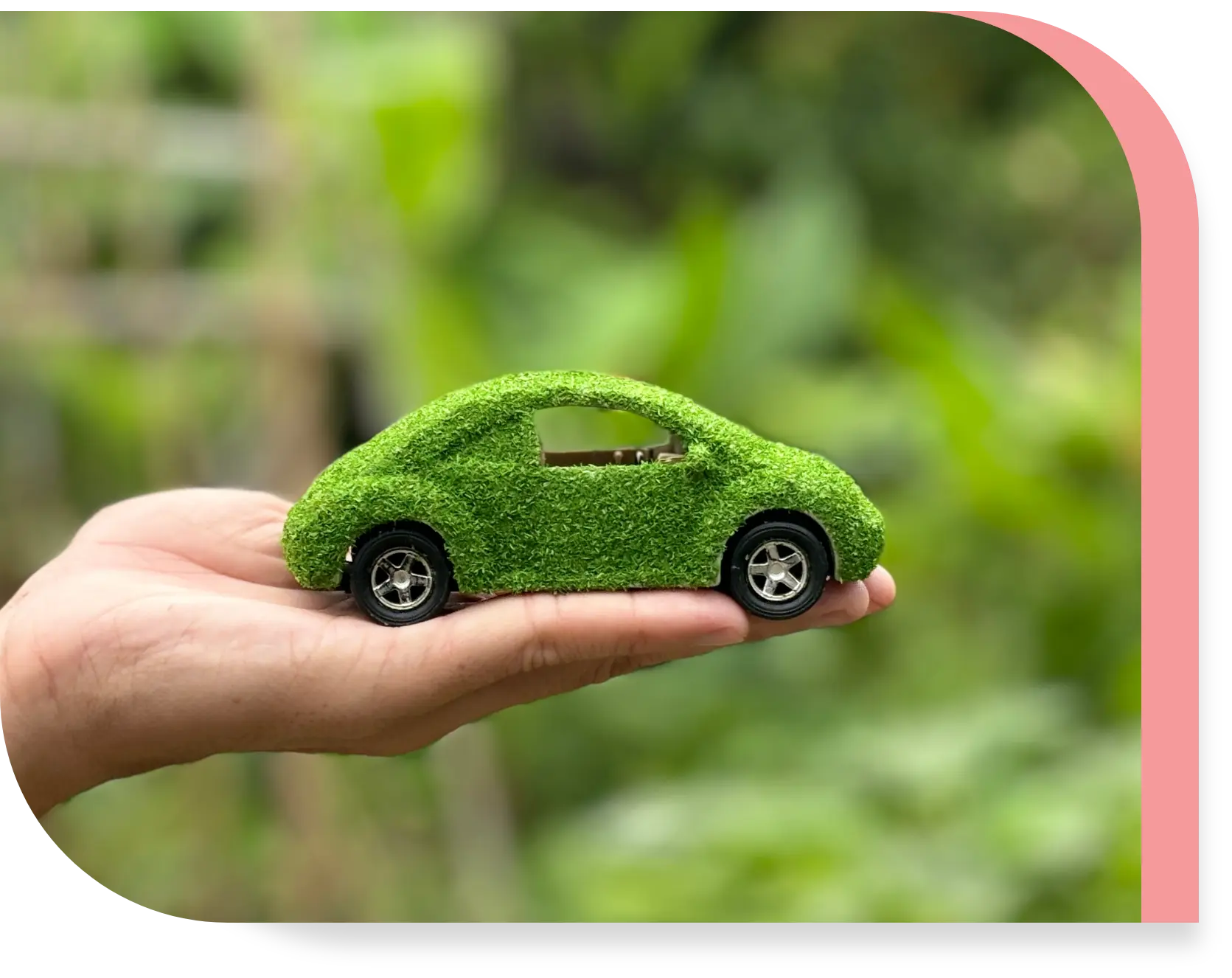
Singapore is strengthening its position as aviation and maritime hubs, with enhanced capabilities and sustainable practices. Air hub targets for instance include achieving net zero carbon emissions for both domestic and international aviation by 205010.
On the road, emissions are controlled by the number of vehicles ‑ determined by the Certificate of Entitlement (COE) quota system ‑ and the type of vehicles, which must run on cleaner energy by 2030. As such, Electric Vehicle (EV) charging points are rapidly being deployed, with SP Group leading the way with the largest network of fast‑chargers.
Buildings account for over 20% of Singapore’s emissions. Greening our buildings11 is hence a key strategy in achieving our sustainability ambitions under the Singapore Green Plan 2030, and to fulfil our international commitments on climate change.
While the target is for 80% of new developments to be Super Low Energy (SLE) buildings from 203012, the bulk of existing buildings also have to reduce carbon emissions, according to benchmarks set by Building & Construction Authority (BCA).
The good news is, SP’s innovative Green Energy Tech (GET®) suite of solutions enables buildings to decarbonise without undergoing major retrofitting works, thus ensuring that business operations continue with minimal disruption.
GET® Insights pulls together granular data on energy and water usage to provide consumption patterns, alerts, and reports via a utilities dashboard. Enabling building owners and facility managers to have a clearer understanding of usage and to take steps to manage consumption.
GET® Control is a building intelligence system that leverages Artificial Intelligence (AI) and the Internet of Things (IoT) in microclimate control to optimise cooling for occupant comfort and energy efficiency. As cooling in a building can account for as much as 60% of its energy usage, the solution can have a significant impact on the building’s energy performance13.
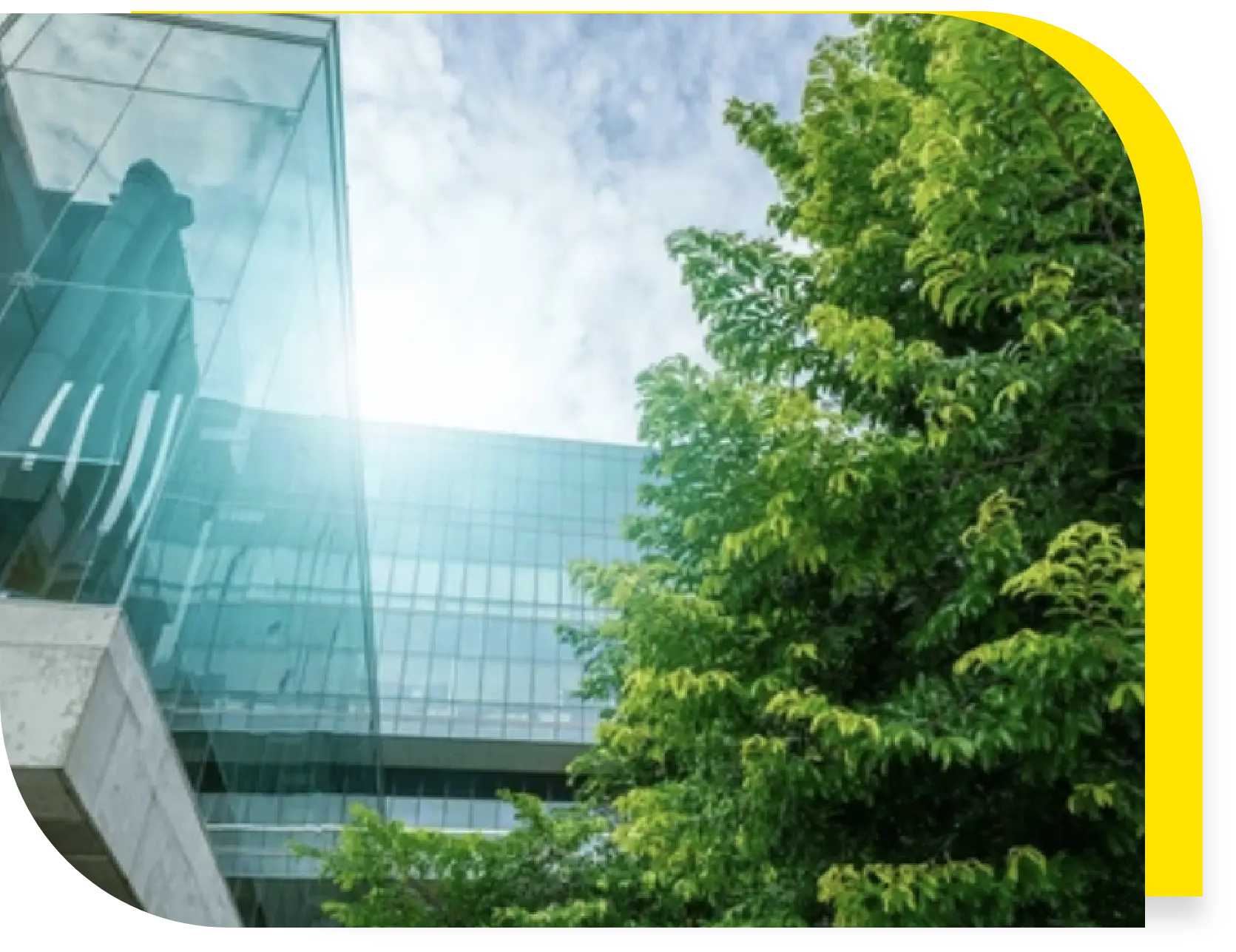
Celebrating Singapore’s 60th year of independence gives new impetus in the nation’s sustainability mission. Whether your company is embarking on a sustainability journey or looking to accelerate its decarbonisation efforts, do join us in the national drive to a greener future.
Contact us about smart energy management.
Footnotes
1Singapore projects its greenhouse gas emissions to peak in 2028: Report | The Straits Times, The Straits Times, Nov 2024.
2Future Developments, Changi Airport.com
3Tuas Port to be 'port of the future', setting new standards, says PM Lawrence Wong, Singapore News - AsiaOne, AsiaOne Oct 2024
4Work to redevelop and expand Woodlands Checkpoint to begin in 2025, Channel News Asia, Jan 2024
5EMA | SES Chapter 6: Solar, Energy Market Authority
6Power, National Climate Change Secretariat (NCCS)
7Energy Reset, SG Green Plan
8Regional Power Grids | EMA, Energy Market Authority
9SP Partners EDF on Subsea Cables to Facilitate Green Energy Import from Indonesia, SP Group
10Sustainable Air Hub Blueprint, Civil Aviation Authority of Singapore (CAAS)
11Greening our buildings, Ministry of National Development
12Green Building Masterplans, Building & Construction Authority (BCA)
